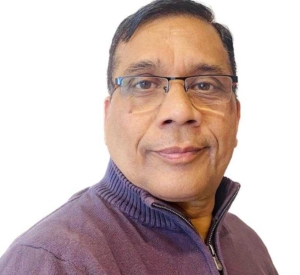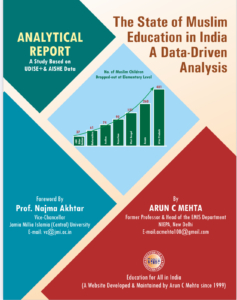Karnataka State Education Commission Press Note on SEP Report 2025
Karnataka State Education Policy 2025: Major Findings & Deviations from NEP 2020
The Karnataka State Education Policy (SEP) 2025 represents a bold and transformative approach to redefining education in the state, prioritizing local socio-cultural, linguistic, and economic contexts. Unveiled on August 8, 2025, under the leadership of Prof. Sukhadeo Thorat, the SEP 2025 explicitly moves away from the National Education Policy (NEP) 2020 to craft a framework that champions inclusivity, equity, and regional identity. With a comprehensive 2,197-page report, the policy introduces significant reforms, such as a localized curriculum, a restructured 2+8+4 education model, and extended reservations in private institutions. This note highlights the key findings of the Karnataka SEP 2025 and its distinct deviations from the NEP 2020, showcasing the state’s commitment to a student-centric and culturally grounded education system.
- Vision and Context: Aims to create a transformative, localized education system aligned with Karnataka’s socio-cultural, linguistic, and economic realities; emphasizes equity, inclusion, universal access, and raising government schools to Kendriya Vidyalaya standards; developed through extensive consultations with 379 experts, 35 task forces, and 132 meetings, resulting in a 2,197-page, three-volume report submitted on August 9, 2025, led by Prof. Sukhadeo Thorat.
- Rejection of NEP 2020: Operates independently of NEP 2020, rejecting its three-language formula and national curriculum to prioritize state-specific reforms while addressing local needs like migration, dropout rates, and socio-economic disparities.
- Structure and RTE Extension: Adopts a 2+8+4 model (2 years pre-primary, 8 years primary/elementary, 4 years secondary); extends RTE coverage to ages 4–18; strengthens ECCE by attaching two-year pre-primary to primary schools, standardizing Class 1 admission age at 6 years (±3 months), and forming an ECCE Council for integrated governance.
- Curriculum Reforms: Replaces NCERT textbooks with a Comprehensive Curriculum for School Education (CCSE) tailored to Karnataka’s context; converts DSERT into an autonomous SCERT for curriculum leadership; integrates experiential learning, critical thinking, and local culture; makes Constitutional Values Education compulsory.
- Language Policy: Implements a two-language formula (Kannada/mother tongue + English) up to Class 12; mandates Kannada or mother tongue as medium of instruction up to Class 5 (preferably up to Class 12) across all boards (CBSE, ICSE, state); trains teachers in bilingual methods and establishes a Language Teaching Centre.
- Equity and Inclusion: Introduces residential schools for migrant children; ensures universal secondary education; enforces SC/ST/OBC reservations in private unaided institutions (universities, deemed universities, autonomous colleges) with transparency; provides free higher education for girls, expanded post-matric scholarships (income limit ₹10 lakh), and incentives to delay child marriage; retains small schools to avoid closures and promote access.
- Financial Commitments: Allocates 30% of state budget to education with annual 5–10% per-student spending increases; establishes ₹500 crore State Research Foundation for innovation; creates State Education Finance Corporation for employment-linked loans to low-income students.
- Teacher and Governance Reforms: Mandates filling all sanctioned teaching posts within five years (vacancy gap <5%); introduces two-step recruitment for Assistant Professors (KEA exams + university interviews); merges parallel educational bodies into a single commissionerate; reduces regional offices to four; sets up district-level academic units led by educationists; emphasizes continuous professional development.
- Vocational and Higher Education: Proposes 3-year UG + 2-year PG for general education and 4-year UG + 2-year PG for professional programs; encourages bilingual teaching in higher education; integrates vocational training with industry collaborations; establishes Karnataka State Open School System for dropouts and working students.
- Other Initiatives: Sets up Foreign Students Cells in universities; creates Karnataka State Quality Assessment Board for standards; uses UDISE+ data for evidence-based planning; promotes digital infrastructure and smart classrooms.
- Monitoring and Data: Leverages UDISE+ for planning; focuses on reducing dropout rates and improving enrollment through targeted programs; third-party evaluations and community involvement for accountability.
Deviations from NEP 2020
Below is a tabular comparison highlighting key differences between the Karnataka State Education Policy 2025 (Karnataka SEP 2025) and the National Education Policy 2020 (NEP 2020).
| Aspect | Karnataka SEP 2025 | NEP 2020 | Key Deviation/Notes |
|---|---|---|---|
| School Structure | 2+8+4 model (2 pre-primary + 8 primary + 4 secondary); RTE extended to ages 4–18. | 5+3+3+4 model (foundational to secondary); ECCE from age 3. | Karnataka opts for a simpler 2+8+4 without NEP’s preparatory/middle divisions; starts pre-primary at age 4 vs. NEP’s age 3; extends RTE beyond NEP’s scope. |
| Language Policy | Two-language formula (Kannada/mother tongue + English); medium in local language up to Class 5 (preferably Class 12); rejects three-language. | Three-language formula (mother tongue + two others, including classical languages); flexible multilingualism. | Explicit rejection of three-language to prioritize Kannada; stricter medium mandate across boards, unlike NEP’s flexibility. |
| Curriculum | State-developed CCSE replacing NCERT; localized to socio-cultural context; autonomous SCERT. | National curriculum framework via NCERT emphasizes pan-Indian values and skills. | Complete shift from national to state-specific textbooks; more focus on local history/geography vs. NEP’s national integration. |
| Vocational Education | Integrated from secondary with industry links; open school system for dropouts. | Exposure from Class 6; 50% learners by 2025. | Karnataka starts later (secondary) but emphasizes local employability; adds open schooling not highlighted in NEP. |
| Higher Education Structure | 3-year UG + 2-year PG (general); 4-year UG + 2-year PG (professional); bilingual encouragement. | 4-year multidisciplinary UG with multiple exits; flexible PG options. | Differs in UG duration for general programs (3 vs. 4 years); adds state-specific bilingual focus. |
| Equity & Reservations | Enforces SC/ST/OBC reservations in private institutions; free education for girls; expanded scholarships. | Focus on SEDGs via gender inclusion fund; no mandatory private reservations. | Goes beyond NEP by mandating reservations in private sector; state-specific incentives like anti-child marriage aid. |
| Budget & Funding | 30% state budget; ₹500 crore research fund; state finance corporation for loans. | 6% GDP nationally; central schemes like Samagra Shiksha. | State-driven high allocation vs. NEP’s national target; independent funding bodies without reliance on central aid. |
| Governance | Merges bodies into a single commissionerate; district academic units; reduces regional offices. | School complexes; state standards authority; national accreditation. | More centralized state governance vs. NEP’s clustered/decentralized model; no national authority linkage. |
| ECCE/Pre-Primary | Two-year pre-primary attached to primaries; ECCE Council; age 4+ focus. | Universal ECCE from age 3; anganwadi upgrades. | Starts later (age 4); state council vs. NEP’s national integration; regulates private pre-schools separately. |
| Assessments & Exams | Not detailed; aligns with continuous evaluation but state-specific. | PARAKH for national assessments; modular board exams. | Lacks mention of national tools; implies state-led surveys over PARAKH. |
| Teacher Reforms | Mandates fill vacancies in 5 years; two-step recruitment; CPD focus. | 4-year B.Ed.; NPST standards. | Emphasizes recruitment timelines vs. NEP’s pre-service overhaul; state training institutes over national standards. |


